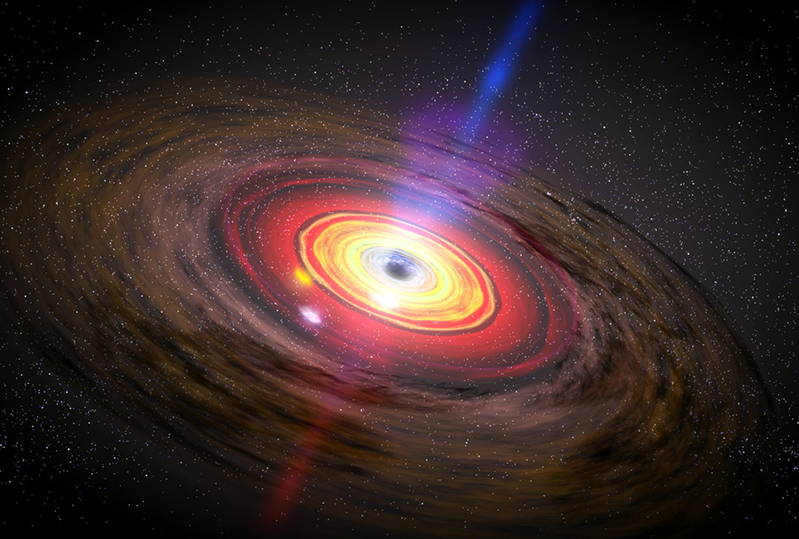
A group of international scientists successfully measured a massive black hole which is 660 million times bigger than the Sun. This feat marks the first time that astronomers precisely calculated the size of a powerful black hole, which even light can't escape from it.
Christian Science Monitor reported the supermassive black hole sits at the heart of the galaxy called NGC 1332, approximately 73 million light-years away from our planet. The research reveals the black hole is 660 million times bigger than the Sun. To picture that enormous size clearly, estimates show it would take 1.3 million Earths to fill up the Sun.
How did the astronomers measure the size of the black hole? Lead researcher Aaron Barth, a professor at the University of California, Irvine, said they used a different type of telescope called the Atacama Large Millimeter/submillimeter Array (ALMA).
ALMA is mounted in deserts of Chile. It has the capability to look at the furious storm of galactic gases around the "sphere of influence" of the black hole. The researchers said they had to measure the speed of these gases to get the exact measurement of the black hole.
Observations show the cold molecular gases are whipping at an insane speed of more than 300 miles per second. It also moves at a radius of about 800 light-years. Take note that the distance of the nearest star from our planet is just four light-years. Thus, the amount of the gasses around the black hole is 200 times wider.
Furthermore, these gasses are not visible at wavelengths as it only appears as a silhouette against a background of densely-packed stars. However, ALMA can see through these stars by observing the cosmos in radio wavelengths.
Researchers study the mass of black holes to understand how these objects grow, change, and shape the galaxies around them. Also, the study of black holes gives us a better understanding of how the universe started.
We previously reported that the nearest black hole is located at about 27,000 light-years away from our planet. The black hole is situated in the constellation Sagittarius and has a massive amount of stars. Fortunately, it does have an effect on Earth's rotation.
The study about the massive black hole in galaxy NGC 1332 is published in Thursday's edition of the journal The Astrophysical Journal Letters.







